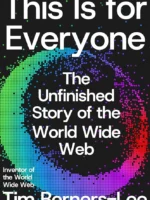Networks: A Very Short Introduction Review
Networks: A Very Short Introduction by Guido Caldarelli is a compact map of network science: how to model systems as nodes and links, measure their structure, and reason about dynamics like contagion, failures, and cooperation. It turns buzzwords—small-world, scale-free—into working concepts you can apply.
Overview
Core topics: graph basics (degree, paths, clustering), small-world effects, heavy-tailed degree distributions, generative models (random graphs, preferential attachment), community structure and assortativity, centrality measures, percolation and robustness, spreading processes, and applications from the Web and biology to finance.
Summary
Caldarelli starts with why networks simplify complexity: entities as nodes, relations as edges. He contrasts Erdős–Rényi randomness with real-world heterogeneity, explains how preferential attachment yields hubs, and shows why clustering and communities matter for function. Dynamics chapters cover thresholds for epidemics, cascade risks, and resilience under random vs targeted attacks. Case studies sketch metabolic, social, technological, and economic networks, highlighting measurement pitfalls and data bias.
Authors
Guido Caldarelli is a physicist and leading network scientist. He writes accessibly, compressing results from physics, computer science, and sociology without drowning the reader in notation.
Key Themes
Heterogeneity drives behavior; local rules create global patterns; structure shapes dynamics (spreading, robustness, control); measurement and sampling choices can mislead; universals (e.g., heavy tails) coexist with domain-specific mechanisms.
Strengths and Weaknesses
Strengths: crisp definitions, balanced theory–application mix, and intuitive explanations of why hubs, clustering, and communities change outcomes. Weaknesses: light math and limited hands-on tooling; some examples predate the latest multiplex/dynamic methods. Treat it as a conceptual primer.
Target Audience
Analysts, engineers, product and policy teams, and students who need a fast, rigorous mental model of networks before diving into code or heavy math.
Favorite Ideas
Small-world shortcuts that shrink distances; preferential attachment as a simple rule that yields hubs; epidemic thresholds depending on degree variance; community structure as both function and failure mode; robustness that flips under targeted attacks.
Takeaways
Model problems as networks when interactions matter. Check degree distributions and clustering before choosing algorithms; expect hubs and communities to dominate dynamics; validate claims against sampling bias. For interventions, target structure: harden hubs, bridge communities carefully, and design incentives that reshape the graph you operate in.






